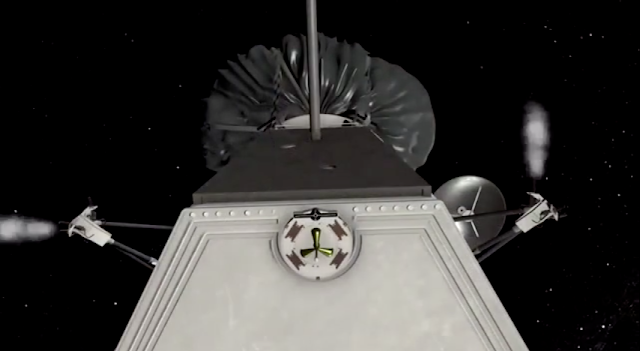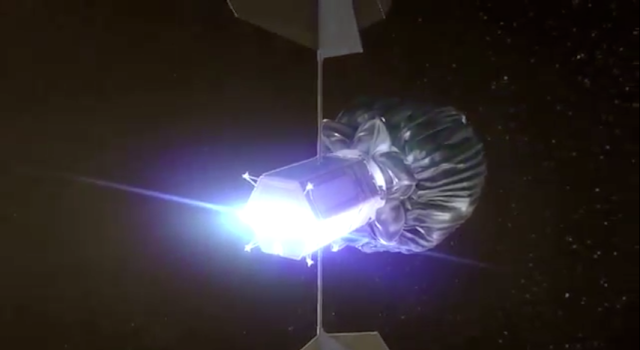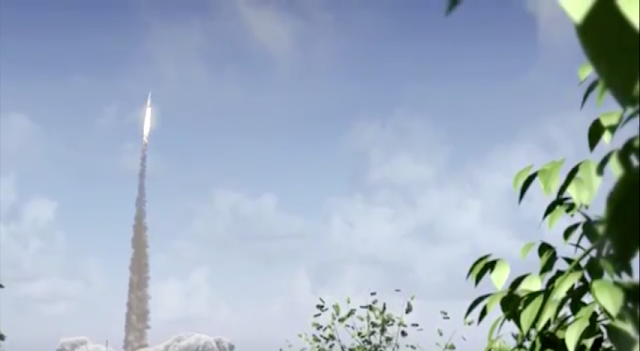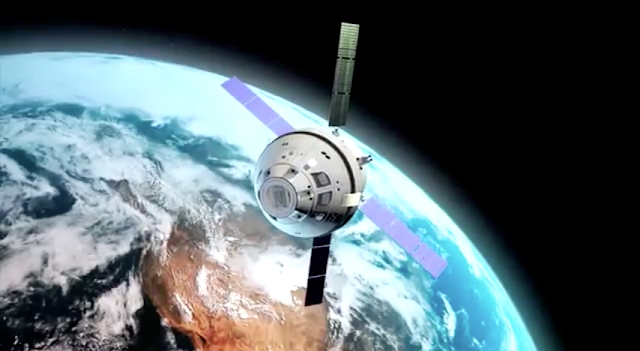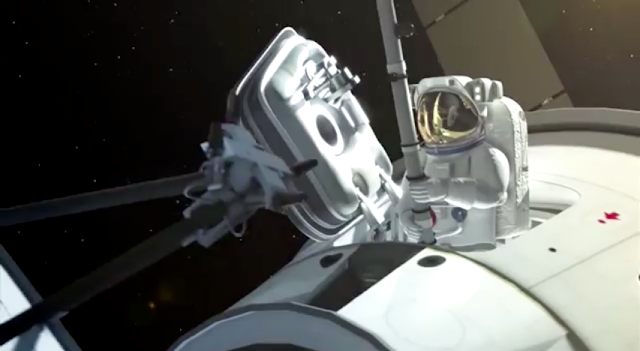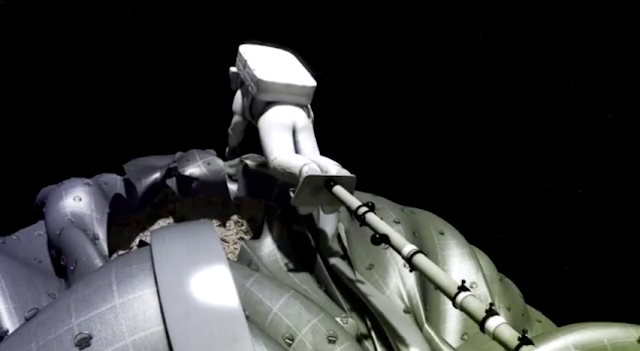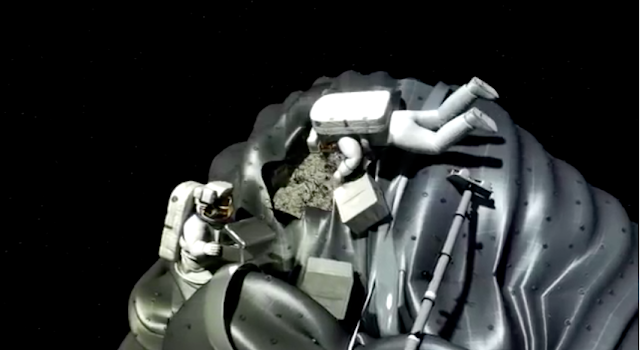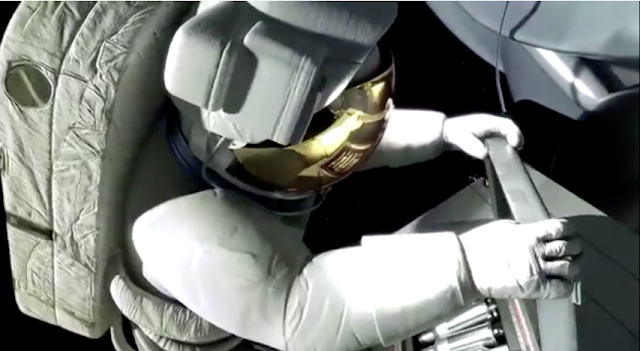























Category Archives: Animations
Lucas Green: “Space Suite” (Proof-of-Concept)
“Proof-of-concept for a project which relies heavily on space visuals to demonstrate compelling footage can be created quickly and easily by mining the impressive public access image libraries of NASA (and others) for stunning photography, and then bringing them to life with simple 3d ‘tricks’. The final project, which is being produced by Two Story Productions (twostoryproductions.com/), will air on BC’s Knowledge Network (knowledge.ca)”
From http://lucasgreen.ca/2015/01/space-suite/ :
1. Saturn’s Polar Hexagon
If you’ve never heard of Saturn’s polar hexagon before, check this out. It’s mind-blowing.
Most of the shots of Saturn and its moons were accomplished in the same manner, by simply projecting high-resolution Cassini photographs onto spheres, and then navigating around those spheres with a virtual camera. Most of the shots are one image + one sphere = really simple stuff. For a shot of the polar hexagon, however, I worked in additional elements to bring the scene to life.
I started with this photograph of Saturn’s south pole, and projected the image onto a sphere. Then I found a timelapse sequence of images taken by the Cassini space probe from directly above the polar hexagon, showing the enormous vortex swirling slowly over a period of several hours. The sequence was comprised of eight individual frames, shown below:
 Twixtor was used to stretch these eight short frames into a seamlessly smooth 240-frame long animation, which was then layered onto my 3d model of Saturn.
Twixtor was used to stretch these eight short frames into a seamlessly smooth 240-frame long animation, which was then layered onto my 3d model of Saturn.
(The camera icons you see below are actually projectors: the left-hand one is projecting an image of saturn onto a sphere. An angled plane behind the sphere is ‘catching’ Saturn’s rings. The camera pointing down is projecting the polar hexagon onto the same sphere. The resulting image can be seen to the right.)
 Once it was lined up with the photography, the animated polar hexagon element was then blended into the rest of the shot:
Once it was lined up with the photography, the animated polar hexagon element was then blended into the rest of the shot:
 To create this lovely final composition (complete with animated weather systems!):
To create this lovely final composition (complete with animated weather systems!):

2. Tycho
For a shot of the mountain in the centre of Tycho Crater, a slightly more detailed approach was needed. In this case, the source photograph was projected onto a low-resolution 3d model of the landscape in Maya.
 The model didn’t have to be too detailed, just enough so that a virtual camera could slowly move around the peak:
The model didn’t have to be too detailed, just enough so that a virtual camera could slowly move around the peak:
Nathan Koga
PHD Comics: “Neil Armstrong on Being a Nerd”
Historic ‘Earthrise’ Re-Created For 45th Apollo 8 Anniversary
















In December 1968, the Apollo 8 crew became the first humans to experience an Earthrise from the lunar orbit. This visualization is based off of the actual photos and satellite imagery. Narrated by Andrew Chaikin, author of A Man on the Moon. Read more here:http://goo.gl/F72E3n
Credit: NASA’s Scientific Visualization Studio
Moon Rotation Video Created From LRO Images
Ben Schweighart (Aero Animation): “Honeybee Robotics – Mars 2020 ‘SLOT bit’ Sample Acquisition and Caching Concept Animation”
Adrian Mann: “TROY Mars Mission Concept”
Adrian Mann(2010) http://bisbos.com/
Reaction Engines Ltd: “The Troy mission concept arises from a feasibility study, performed to confirm the capability of the SKYLON launch vehicles does enable large human exploration mission to the planets.
The Troy mission is envisaged to be performed in two parts – an unmanned, precursor mission, and the later manned mission. Using SKYLON, the elements for the Troy ships are delivered to an Orbital Base Station, where the components are assembled. These components are designed to fit into the SKYLON payload bay, and have as much commonality as possible. The Precursor Ships comprise an Earth Departure Stage, a Mars Transfer Stage, three large Landing Modules, (one carrying rovers, one carrying power and propellant production plant, and one carrying an accommodation module), and a Ferry Vehicle for the journey to and from Mars orbit to the surface. Transit time to Mars would be 264 days, and on arrival, the three landing modules would be deployed to land at a pre-selected site, forming a base. Three Precursor Ships would be sent, forming three bases on Mars which would enable the rovers to reach more than 90% of the Martian surface.
The Earth Departure stages of the Precursor Ships would not achieve escape velocity, and would return to the vicinity of the Orbital Base Station after a period of 50 days, where they could be recovered and re-used in the Manned Ships. These Manned Ships would also comprise a Mars Transfer Stages, an Earth Return Stage, crew accommodation modules, and capsules for the return to Earth orbit. These ships would be despatched at the next launch opportunity, and take 251 days to reach Mars. On their arrival, they would dock with the waiting Precursor Ships and the crew transfer to the Ferry vehicles for the trip to the Martian surface, where they would land at the pre-prepared bases.The crews, each comprising 6 members, would spend 14 months exploring the Martian surface, making extensive use of the rovers.
Atmospheric processors at each of the three bases would collect gases, separating and storing them for use by the explorers and to provide propellant for the ferry vehicles.
At the end of the exploration phase, the crews would use the Ferry vehicles to leave the surface and dock with the orbiting missions ships, and from there begin the journey home. Once in the vicinity of the Earth, the return capsules would separate and perform an aerobraking manoeuvre in order to slow down to the point where they could dock with waiting SKYLONs for return to earth.”
Petros Vrellis: "Starry Night" (Interactive Animation)
NASA Should Develop State-of-the-Art Telerobotics
Asteroid Mining Will Be Telerobotic Only
At 2:15 an astronaut snaps flash photos of the asteroid surface!














































